Appreciating Art: Seeing Nature
One of my favorite things we did this year in school was visit the Seeing Nature exhibit at the Seattle Art Museum. I downloaded the Bravewriter Art Appreciation for the Whole Family guide the night before and planned a couple of activities to help engage the kids and allow us to look at the art in new ways. At first, I was afraid the guide was geared toward younger kids (mine are in middle school), but the planning was well worth it. We ended up borrowing a couple of ideas and going with the flow for the rest of our visit. I love going to the museum, but my kids tend to get tired and bored pretty quickly. So focusing on just one exhibit and then narrowing down on a couple of pieces of artwork for discussion really helped.
In the lobby of the museum, there is a breathtaking 105 foot-long sculpture of a 140 year-old Hemlock tree. The piece by John Grade, Middle Fork, forces you to think about nature and the trees that are around us in a new way. The process he went through to create the sculpture out of cedar from an actual cast was playing on a short video near the tree. It helped us to see the tree in different ways and appreciate the number of hours the artist and volunteers put into this piece. It is well worth seeing.
After the tree finishes being on exhibit, it will be returned to nature to decompose at the foot of the tree they cast for the piece. All that work and energy being returned to the earth to feed the forest is so inspiring and thought provoking. The kids thought that was so cool!
Six Word Stories
When we walked through the Seeing Nature exhibit, we decided to pick three pieces that we would study and then write six-word stories. My son wasn't interested in sketching them, but my daughter and I did some quick sketches to help us see the shapes and colors before settling on the stories. This was the first time we'd written six-word stories, so it was interesting to see that they approached them more like poems than stories.
1. Ruins in the Campagna di Roma, Morning (Thomas Cole in 1842)
son: sunset, shadow, clouds, peaceful, grazing, ruins
daughter: the sun flowed gold graciously
me: sheep graze in the morning glow
2. Cosmic Cities, Grand Canyon of Arizona (Arthur Wesley Dow in 1912)
son: abstract colors, realistic, big, alien, 3D
daughter: coral canyon with blue shadows glowed softly
me: shadows grace cosmic cities in periwinkle
3. The Grand Canyon (David Hockney in 1998)
son: playful, crazy, abstract, rainbow, climate
daughter: purple cabbage, butter, broccoli, jello, cheddar, seaweed
me: playful memories merge with vibrant foods
This is what our art journals looked like during our visit. We purchased postcards of major works from the exhibit so we could remember them better, and placed them in our journals beside our sketches and poems.
Art Imitation
Before we left, we each chose one piece of art to go home and imitate. There were no rules or limitations on what they could choose. While this seemed like an easy task, it was harder than it looked! Later in the week, we spent a whole day working with acrylic paints and trying to figure out how the artist approached each piece. We encouraged each other and helped to blend colors or see things in a new way. It was a great (if VERY messy) day of what felt like play in the midst of juicy conversations about the choices the artists made and the pros or cons of the different mediums they used.
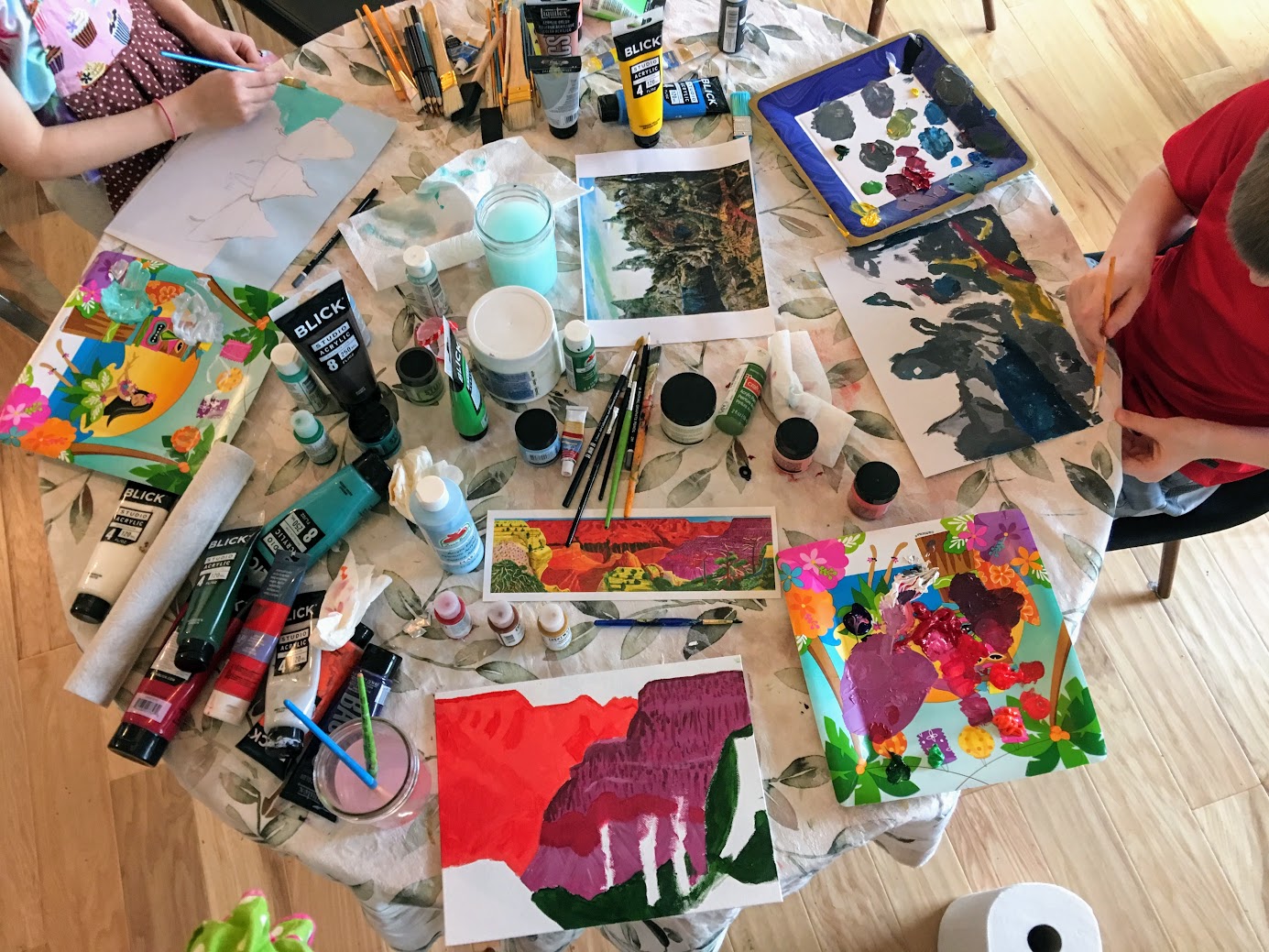
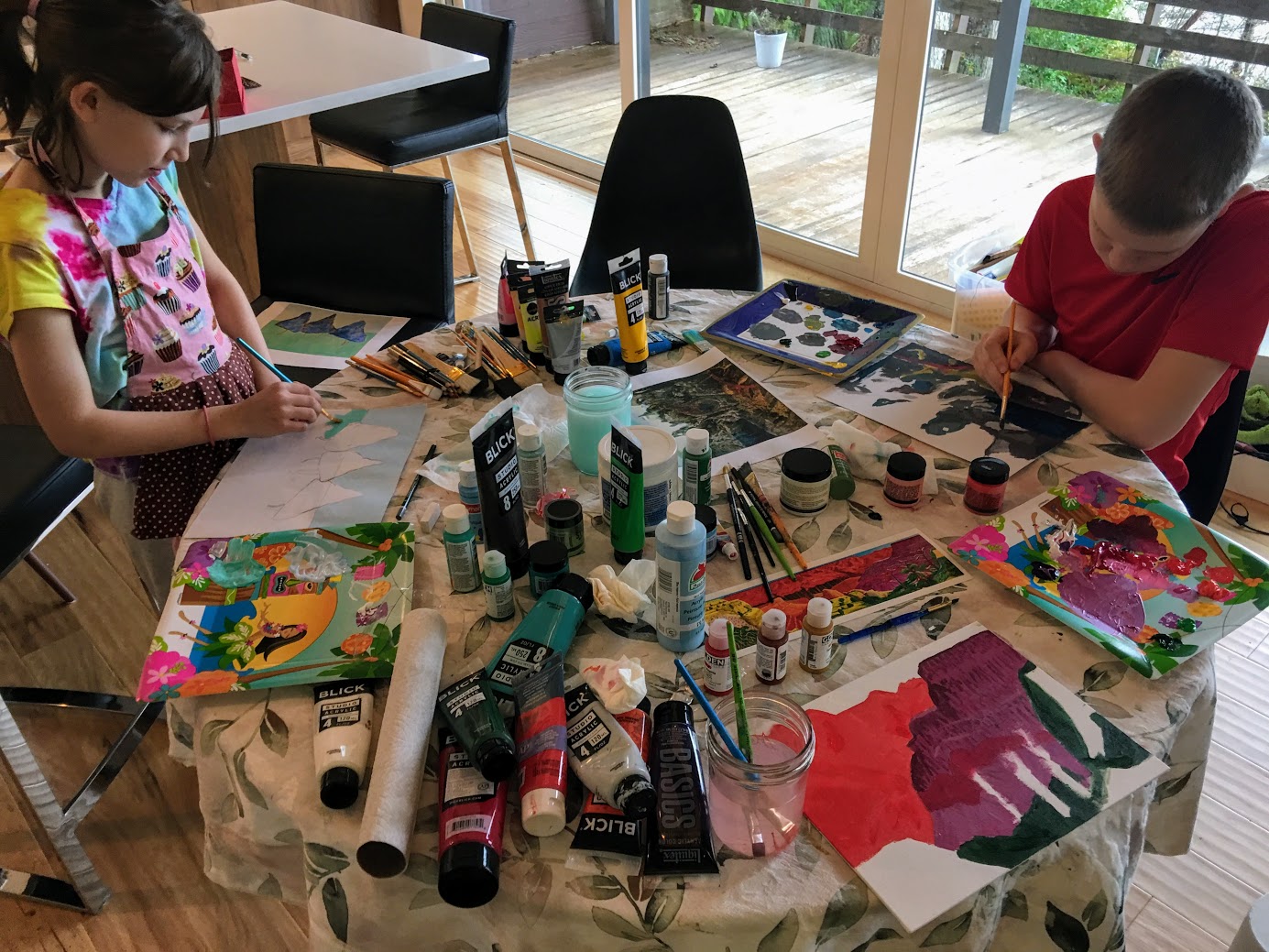
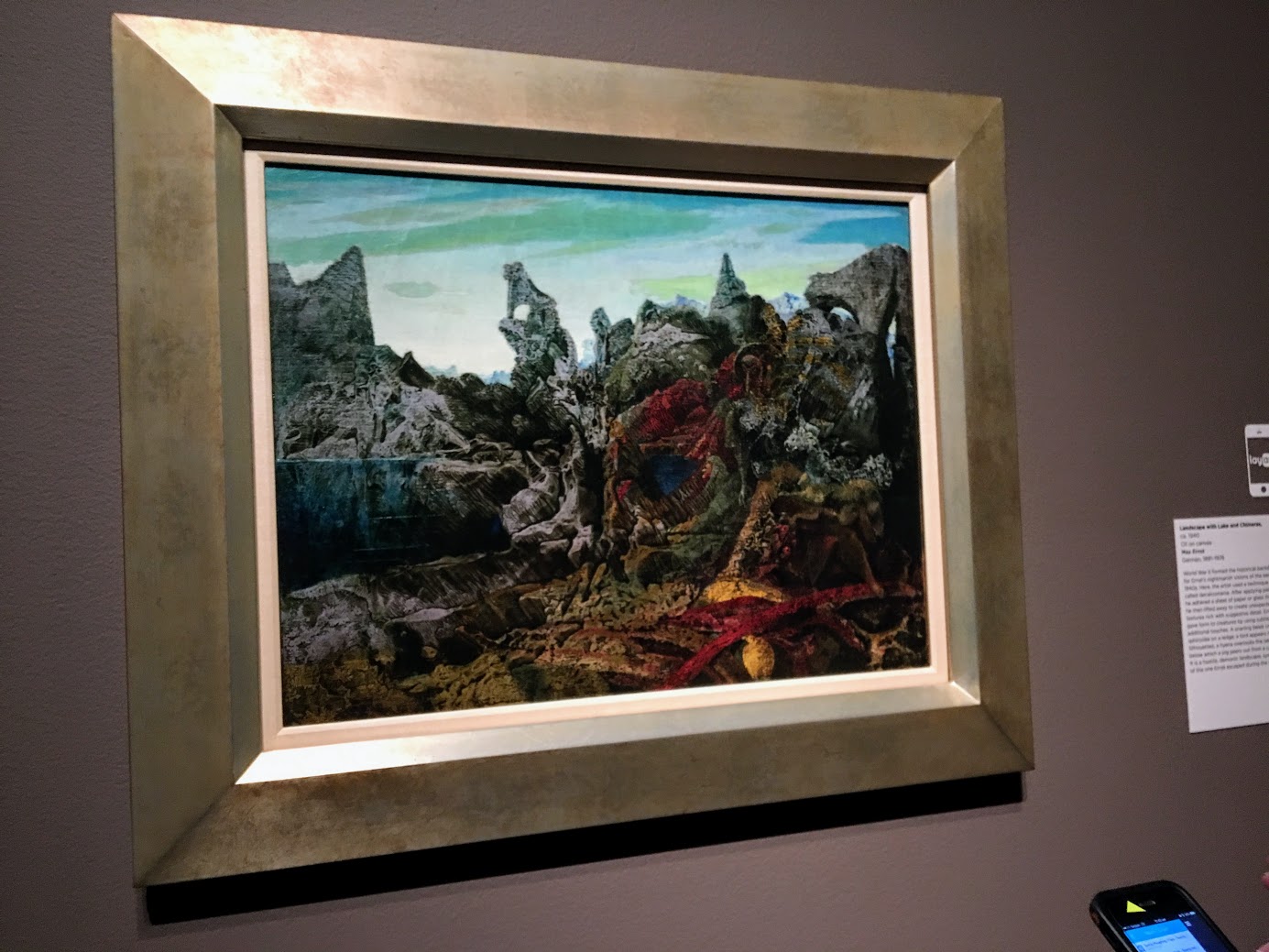
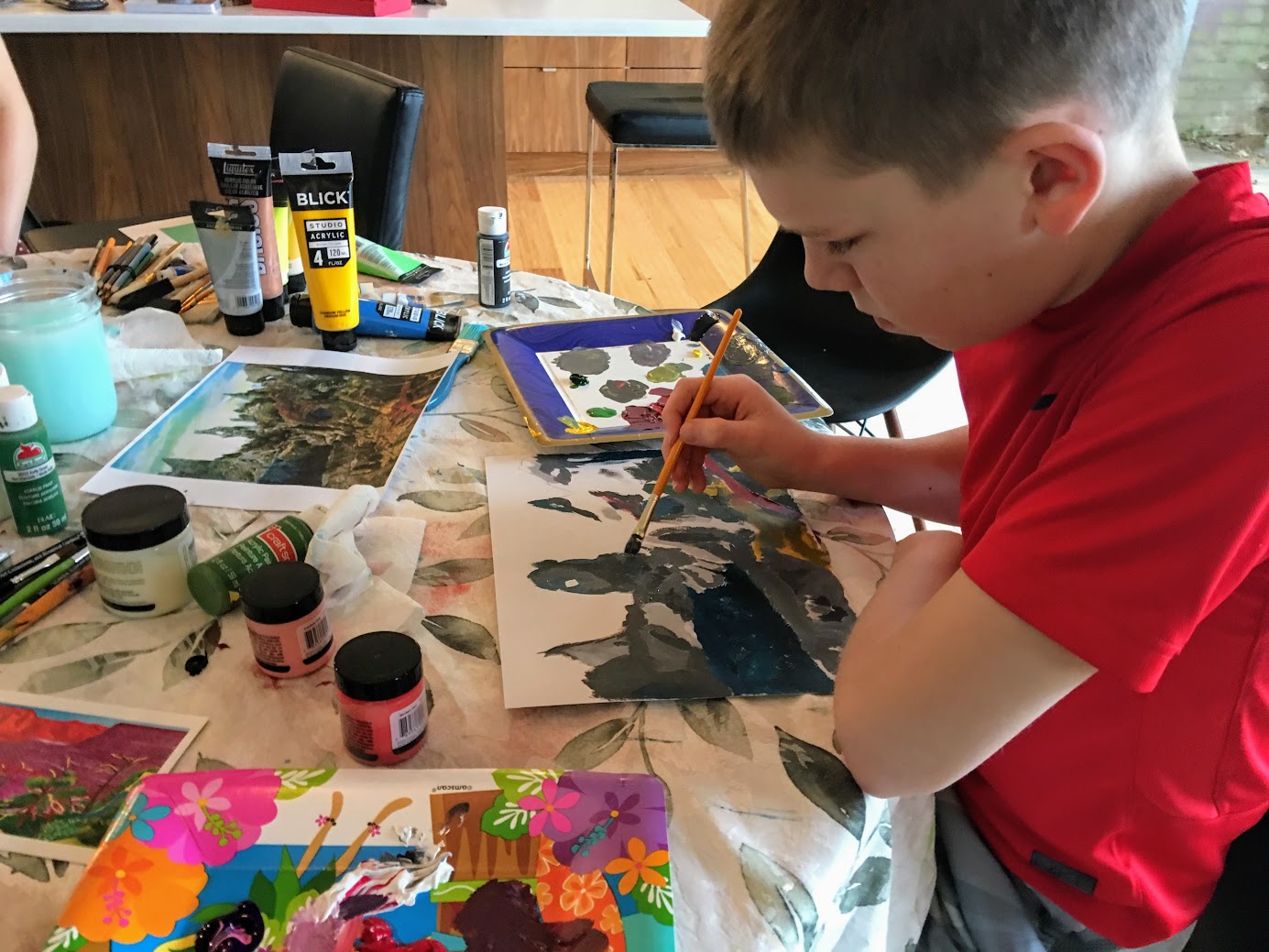
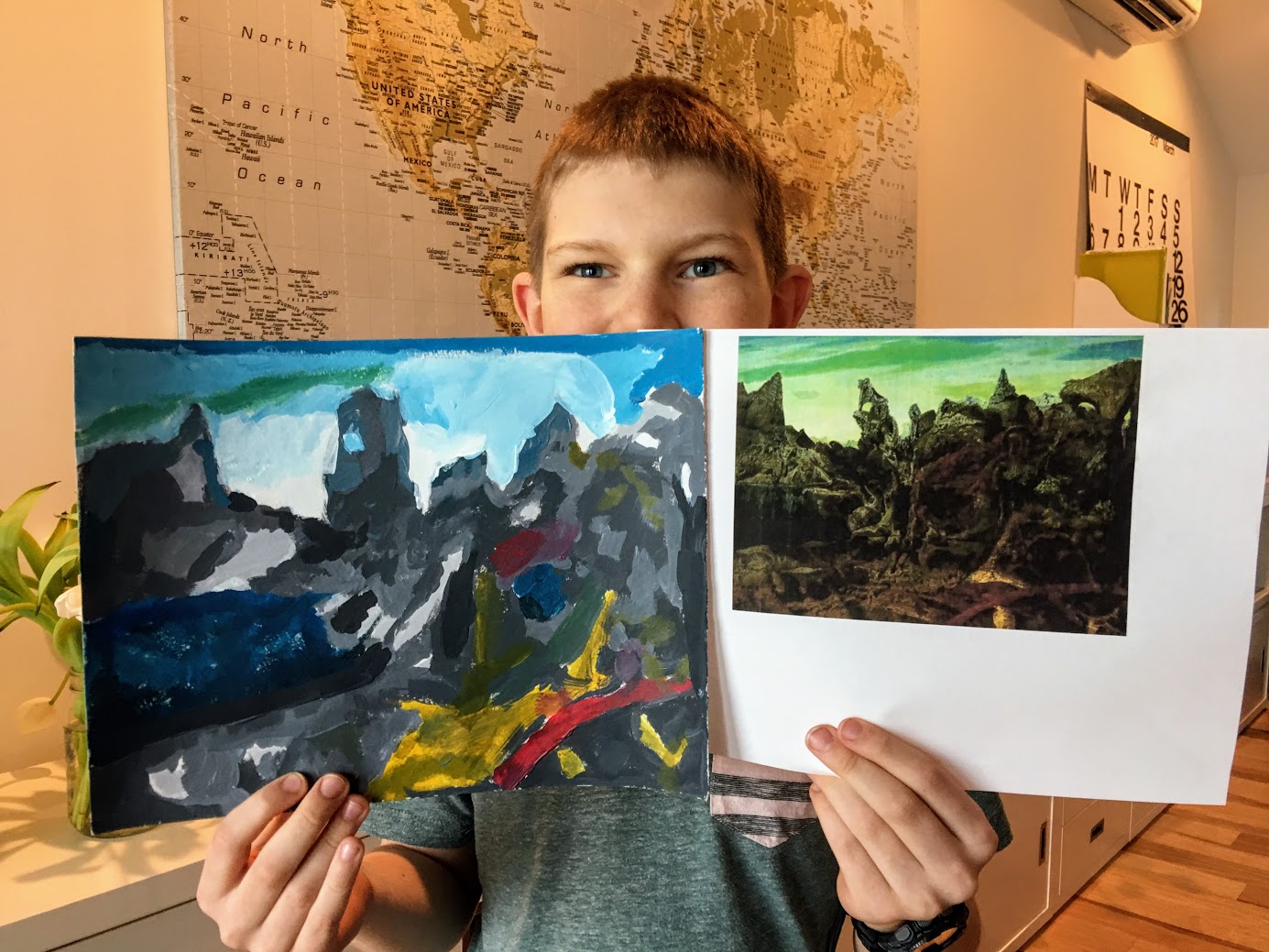
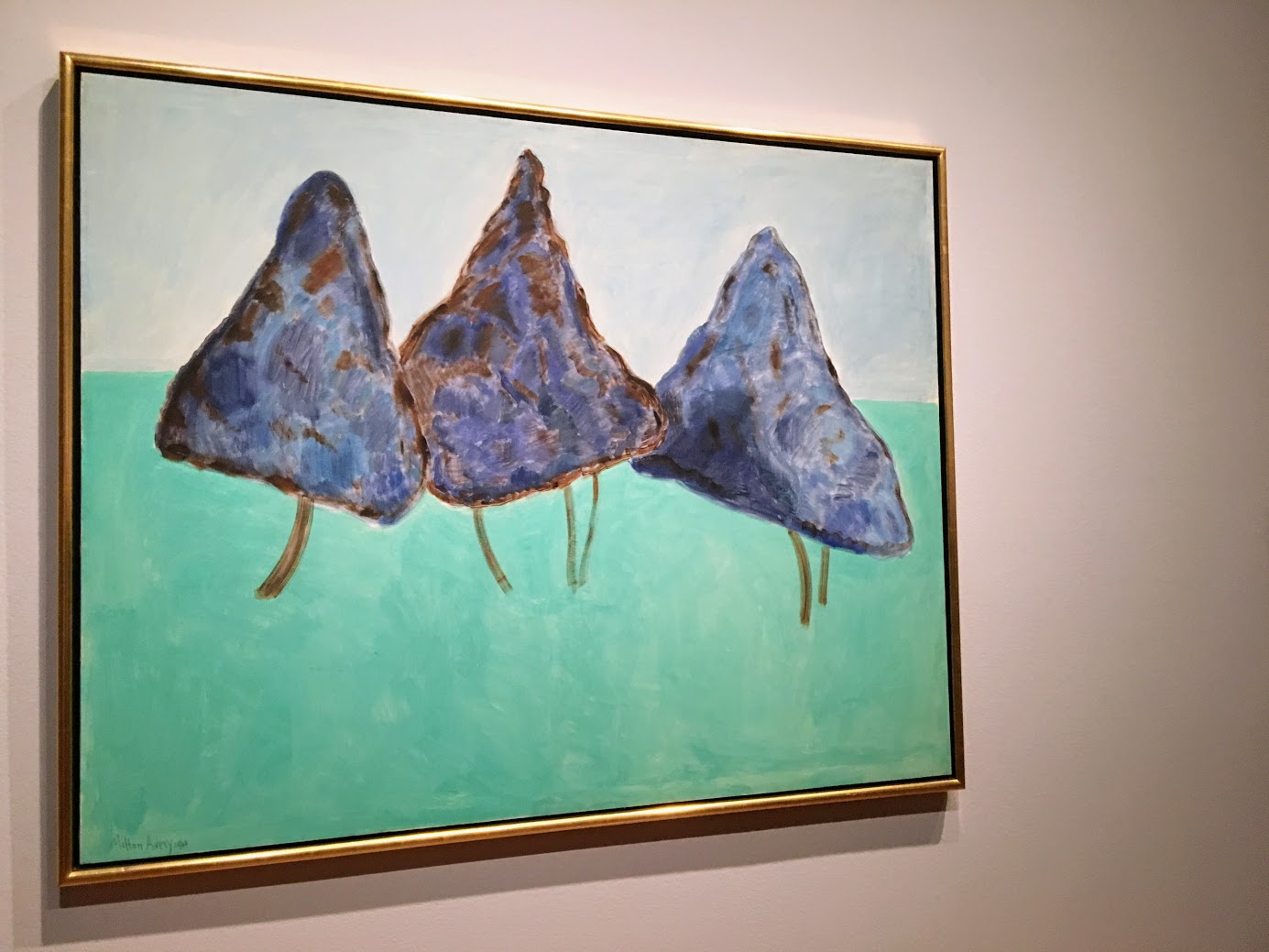

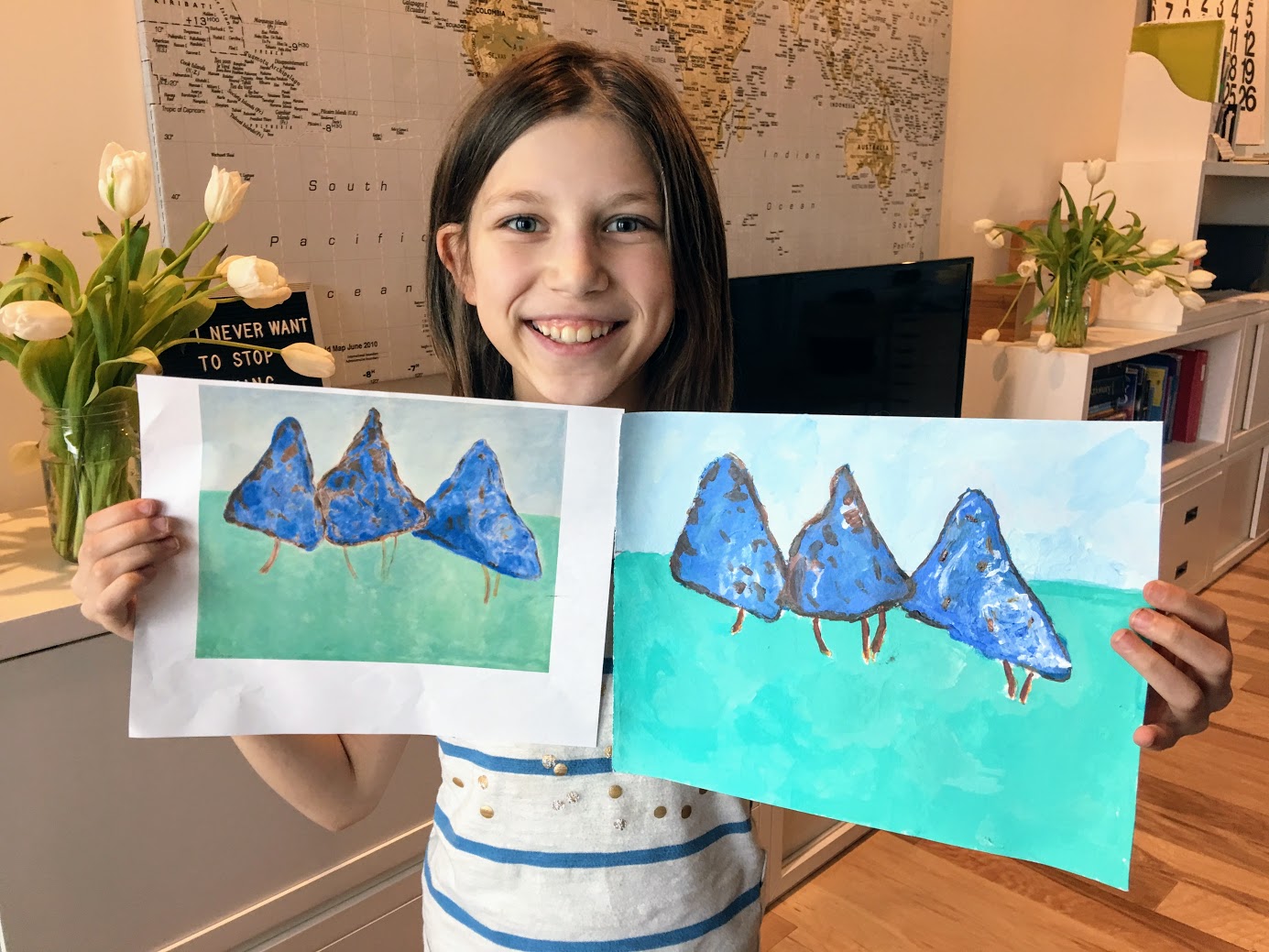


This was fun, felt light, and really helped us to appreciate how much work goes into art that looks so simple at first. The printed artwork and their imitation pieces are also included in their art journals.
This trip was definitely one of the highlights of our school year. We can't wait to do it again this summer!




